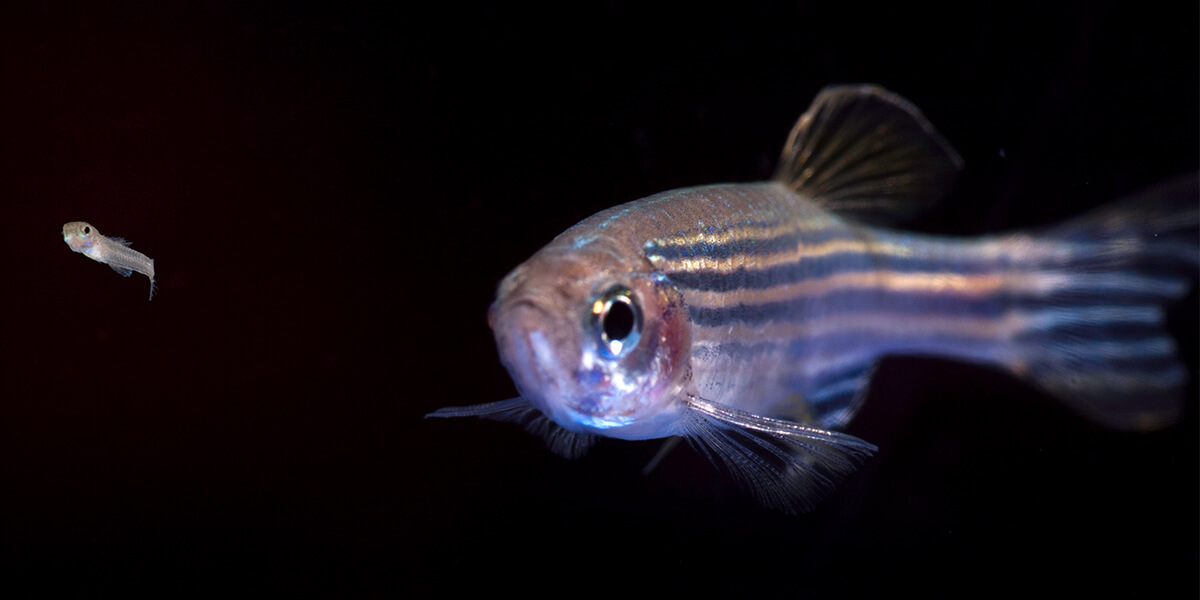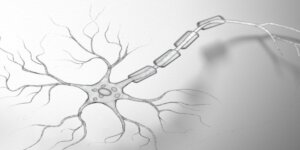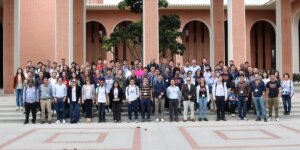
Adult zebrafish and zebrafish larva
Decisions are difficult. Humans often find themselves deliberating between multiple conflicting alternatives, or frustratingly fixated upon a single option. When faced with a threat, zebrafish larvae don’t have that luxury. The direction they take to escape from a predator is a matter of life and death.
A groundbreaking study led by Kanso Bioinspired Motion Lab at USC Viterbi School of Engineering has opened new pathways to investigate the grey space between sensory input and behavioral response in zebrafish. The paper, “Evaluating Evasion Strategies in Zebrafish Larvae,” was recently published in the Proceedings of the National Academy of Sciences (PNAS).
A powerful new method for evaluating data and theories
When it comes to analyzing predator-prey interactions, there are two traditional schools of thought. One claims that the optimal survival response is to confuse the predator through random movement; the other favors a strategy of maximizing distance from the predator.
Neither of these theories were sufficient for Eva Kanso, the Z.H. Kaprielian Fellow in Aerospace and Mechanical Engineering and the founder of Kanso Lab at USC.
Kanso, together with PhD students Yusheng Jiao and Brendan Colvert and post-doctoral scholar Yi Man, teamed up with Matt McHenry, a biologist at the University of California, Irvine, to put these theories to test.
“Instead of approaching the study with preconceived notions of what we think the animal is doing, we established a mathematical framework that would allow us to compare multiple theories in relation to data from experiments,” said Kanso. “This methodology evaluates the best predictions of prey behavior among all alternatives.”
In short: the study indicates that a fish increases its chances of escape by moving at an angle perpendicular to the predator’s direction of travel. However, the consistency of that response is dependent on the amount of neuronal processing required to sense the predator and respond accordingly. It’s a strategy that applies the age-old wisdom of survival: “don’t overthink it.”
Escape and constraint: the puzzle of survival
Kanso’s work focuses on the physics of animal behavior; a central theme of her research is the role of the mechanical environment, specifically the fluid medium and fluid-structure interactions, have in shaping and driving biological functions.
To this end, the study also examined the mechanics of the of “C-start” shape which initiates the fish’s movement away from the predator. “When the larvae curls its body into the shape of a “C,” there are biomechanical constraints in relation to the environment that limit the angle of movement,” said Kanso.
The process of sensory perception and motor response are subject to the presence or absence of environmental noise, and the group’s evaluation framework is specifically designed to incorporate this factor into the data analysis.
Ultimately, the point of the study is not to close the conversation with a definitive theory, but to provide a new and effective methodology for ongoing investigation. “It was an incredibly enjoyable experience working with the team, combining our different expertise in engineering, physics, and biology,” said Kanso. “It was like putting together the pieces of a puzzle.”
“By developing an innovative framework for the evaluation of different hypotheses, our lab proposes a research methodology that could be applied to a broad range of animal behavior,” said Kanso. “The study could also inform bioinspired robots, and the design of underwater vessels such as submarines. It’s fascinating to explore what behavioral observation can teach us about the processing of sensory stimuli in living organisms. That’s still an open question in science.”
You can read the paper in full here.
Published on February 9th, 2023
Last updated on February 10th, 2023













